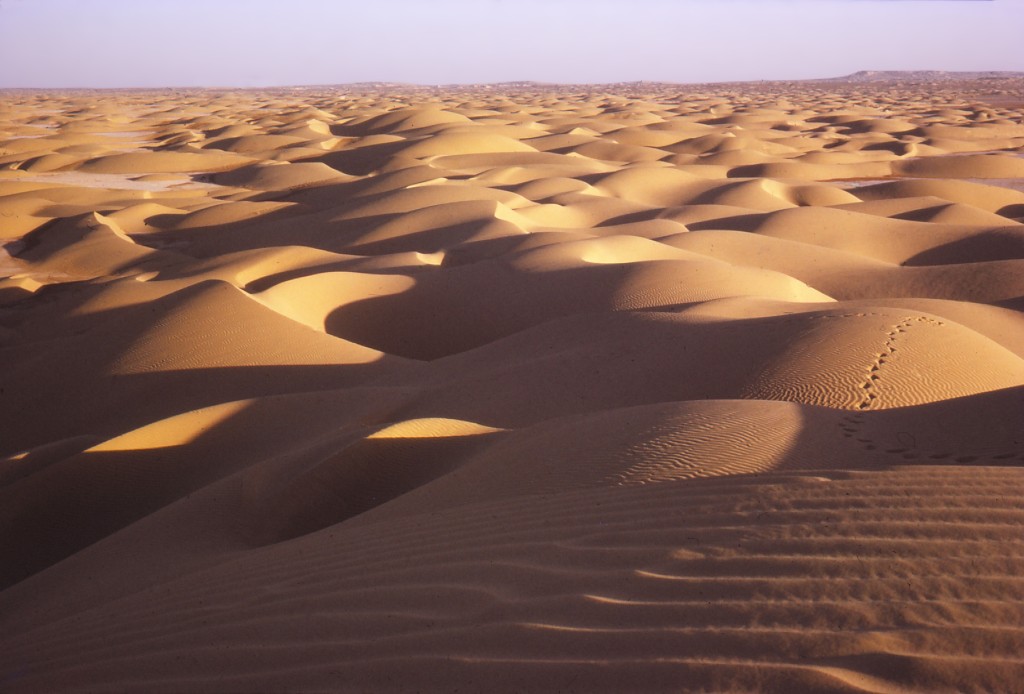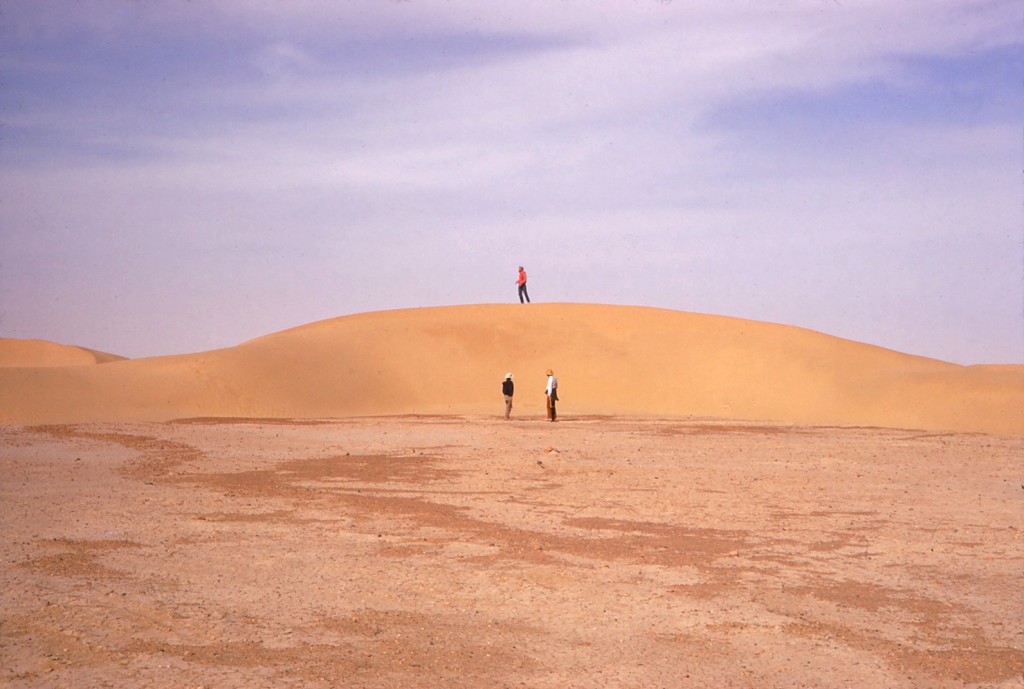Sand Dunes
Dunes are a feature of the Sistan landscape and have been for a long time. Our excavations discovered that walls at Qala 169, dating to around 1000 BCE, were founded on a bed of sand. The dunes move in the persistent Sistan winds, though some dunes become stationary and even support vegetation. The ultimate source of all dunes in Sistan are the sands transported by the Helmand River during floods and spring runoff. When floodplains and deltaic plains dry out, winds excavate and transport sands to the southeast, usually in dune form. Sands from the deltaic plains and Hamin-i Puzak blow across the Sar-o-Tar Plain and back into the Helmand River around Rudbar. Hence, a significant portion of aeolian sands are recycled in Sistan as they are once again redeposited downstream.




